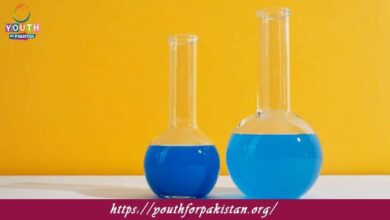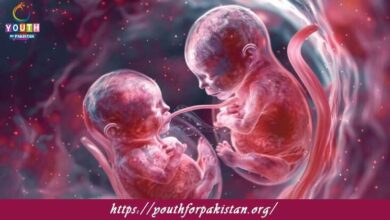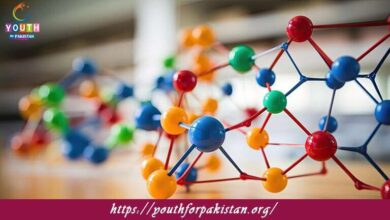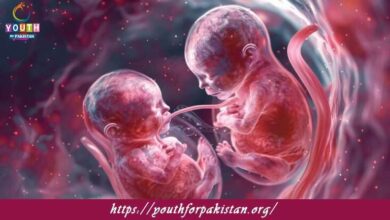12th Class Biology Chapter 27 MCQs with Answers
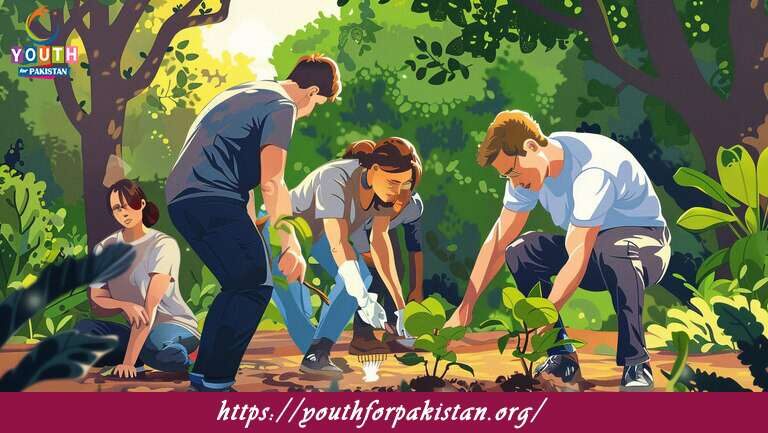
Understand the relationship between Man and his Environment through 12th Class Biology Chapter 27 MCQs. Trending terms like environmental biology quiz, human impact MCQs, and ecology test make it ideal for preparing modern-day topics.
Which of the following is a renewable natural resource?
a) Fossil fuels
b) Minerals
c) Timber
d) Natural gas
What is the primary source of energy in most ecosystems?
a) Wind
b) Water
c) Sunlight
d) Geothermal heat
Which environmental problem is associated with excessive release of greenhouse gases?
a) Ozone depletion
b) Global warming
c) Acid rain
d) Deforestation
Which of the following activities is an example of sustainable development?
a) Clear-cutting a forest for lumber without replanting
b) Overfishing a lake to maximize short-term profits
c) Using solar panels to generate electricity
d) Dumping industrial waste in a river
What is the term for the variety of life on Earth, including the diversity of species, ecosystems, and genetic variation?
a) Biodiversity
b) Ecological footprint
c) Sustainability
d) Climate change
Which of the following is a non-renewable resource?
a) Wind
b) Solar energy
c) Natural gas
d) Biomass
What is the term for the release of harmful substances into the environment, causing damage to living organisms?
a) Pollution
b) Erosion
c) Conservation
d) Deforestation
Which of the following is an example of a point source of pollution?
a) Smoke from a factory chimney
b) Pesticides sprayed over a large field
c) Runoff from a parking lot
d) Emissions from vehicles on a highway
The process of breaking down waste materials into less harmful substances in the environment is known as:
a) Decomposition
b) Deforestation
c) Erosion
d) Pollution
Which of the following is a major factor contributing to deforestation?
a) Sustainable logging practices
b) Afforestation
c) Urbanization
d) Reforestation
What is the term for the sustainable use and management of natural resources to meet the needs of the present without compromising the ability of future generations to meet their needs?
a) Sustainability
b) Conservation
c) Pollution
d) Biodiversity
Which of the following is a greenhouse gas?
a) Oxygen
b) Nitrogen
c) Carbon dioxide
d) Hydrogen
The process of removing minerals and other valuable materials from the Earth’s crust is
known as:
a) Afforestation
b) Conservation
c) Mining
d) Pollution
Which of the following is a renewable source of energy?
a) Coal
b) Natural gas
c) Solar energy
d) Nuclear power
What is the term for the increase in the Earth’s average temperature caused by the
release of greenhouse gases?
a) Ozone depletion
b) Climate change
c) Desertification
d) Acid rain
Which of the following is a major cause of soil erosion?
a) Deforestation
b) Overfishing
c) Air pollution
d) Recycling
The process by which water vapor in the atmosphere turns into liquid water and falls to
the Earth’s surface as rain or snow is called:
a) Evaporation
b) Transpiration
c) Condensation
d) Precipitation
Which of the following is a consequence of desertification?
a) Expansion of forests
b) Increased biodiversity
c) Loss of fertile land
d) Reduction in carbon emissions
What is the term for the process of removing salt from seawater to produce fresh water?
a) Desalination
b) Afforestation
c) Deforestation
d) Erosion
Which of the following is a consequence of air pollution?
a) Ozone layer depletion
b) Global warming
c) Acid rain
d) Desertification
What is the term for the cutting down of trees without replanting or allowing the forest to regenerate naturally?
a) Afforestation
b) Deforestation
c) Desertification
d) Erosion
Which of the following is a consequence of acid rain?
a) Global warming
b) Ozone layer depletion
c) Soil fertility improvement
d) Damage to aquatic ecosystems
The process of introducing harmful substances into the environment at levels that exceed the capacity of natural processes is called:
a) Erosion
b) Pollution
c) Conservation
d) Afforestation
Which of the following is a consequence of ozone layer depletion?
a) Global warming
b) Acid rain
c) Increased ultraviolet (UV) radiation
d) Desertification
What is the term for the process of restoring degraded areas of land to their natural state?
a) Mining
b) Erosion
c) Reforestation
d) Pollution
Which of the following is an example of a biodegradable material?
a) Plastic
b) Aluminum
c) Paper
d) Glass
The process of converting waste materials into reusable materials is known as:
a) Mining
b) Pollution
c) Recycling
d) Deforestation
Which of the following is an example of a non-biodegradable material?
a) Paper
b) Aluminum
c) Food waste
d) Leaves
The process of removing salt and other impurities from seawater to make it suitable for drinking and irrigation is called:
a) Desalination
b) Afforestation
c) Deforestation
d) Erosion
Which of the following is a consequence of overfishing?
a) Loss of biodiversity
b) Desertification
c) Increased soil fertility
d) Expansion of fish populations
What is the term for the practice of growing different crops in the same field in sequential seasons to improve soil fertility and reduce erosion?
a) Crop rotation
b) Reforestation
c) Afforestation
d) Deforestation
Which of the following is a consequence of urbanization?
a) Increased biodiversity
b) Reduced pollution
c) Deforestation
d) Loss of natural habitats
The process by which fertile land becomes desert due to deforestation, overgrazing, or climate change is known as:
a) Acidification
b) Desertification
c) Ozone depletion
d) Biodiversity loss
Which of the following is a consequence of eutrophication?
a) Increased biodiversity
b) Acid rain
c) Dead zones in aquatic ecosystems
d) Ozone depletion
The process of returning a degraded ecosystem to a stable, self-sustaining condition is known as:
a) Pollution
b) Restoration
c) Mining
d) Erosion
Which of the following is a renewable source of energy?
a) Coal
b) Oil
c) Solar energy
d) Natural gas
The process of removing and using natural resources from the Earth, such as minerals and fossil fuels, is known as:
a) Pollution
b) Recycling
c) Mining
d) Reforestation
Which of the following is a consequence of biodiversity loss?
a) Reduced air pollution
b) Increased climate change
c) Enhanced soil fertility
d) Decreased ecological resilience
The process of reducing waste by using products multiple times or in different ways is known as:
a) Recycling
b) Mining
c) Pollution
d) Reuse
Which of the following is a consequence of habitat destruction?
a) Increased biodiversity
b) Enhanced ecological balance
c) Loss of plant and animal species
d) Soil fertility improvement
What is the term for the practice of planting trees to replace those that have been cut down or destroyed?
a) Afforestation
b) Deforestation
c) Reforestation
d) Desertification
Which of the following is a consequence of air pollution?
a) Ozone layer depletion
b) Acid rain
c) Soil erosion
d) Erosion
The process of turning waste materials into reusable materials to prevent them from becoming pollution is known as:
a) Pollution
b) Mining
c) Recycling
d) Erosion
Which of the following is a renewable natural resource?
a) Fossil fuels
b) Minerals
c) Timber
d) Natural gas
What is the term for the variety of life on Earth, including the diversity of species, ecosystems, and genetic variation?
a) Biodiversity
b) Ecological footprint
c) Sustainability
d) Climate change
Which environmental problem is associated with excessive release of greenhouse gases?
a) Ozone depletion
b) Global warming
c) Acid rain
d) Deforestation
What is the primary source of energy in most ecosystems?
a) Wind
b) Water
c) Sunlight
d) Geothermal heat
Which of the following activities is an example of sustainable development?
a) Clear-cutting a forest for lumber without replanting
b) Overfishing a lake to maximize short-term profits
c) Using solar panels to generate electricity
d) Dumping industrial waste in a river
What is the term for the increase in the Earth’s average temperature caused by the
release of greenhouse gases?
a) Ozone depletion
b) Climate change
c) Desertification
d) Acid rain
Which of the following is a non-renewable resource?
a) Wind
b) Solar energy
c) Natural gas
d) Biomass
What is the term for the process of removing salt from seawater to produce fresh water?
a) Desalination
b) Afforestation
c) Deforestation
d) Erosion
The process of breaking down waste materials into less harmful substances in the environment is known as:
a) Decomposition
b) Deforestation
c) Erosion
d) Pollution
Which of the following is a major cause of soil erosion?
a) Deforestation
b) Overfishing
c) Air pollution
d) Recycling
The process of converting waste materials into reusable materials is known as:
a) Mining
b) Pollution
c) Recycling
d) Deforestation
Which of the following is a renewable source of energy?
a) Coal
b) Natural gas
c) Solar energy
d) Nuclear power
What is the term for the process of returning a degraded ecosystem to a stable, self- sustaining condition?
a) Pollution
b) Restoration
c) Mining
d) Erosion
Which of the following is a renewable source of energy?
a) Coal
b) Oil
c) Solar energy
d) Natural gas
Which of the following is a major cause of air pollution?
a) Carbon dioxide emissions from vehicles
b) Solar energy
c) Nuclear power plants
d) Reforestation
The process of removing and using natural resources from the Earth, such as minerals and fossil fuels, is known as:
a) Pollution
b) Recycling
c) Mining
d) Reforestation
What is the term for the practice of growing different crops in the same field in sequential seasons to improve soil fertility and reduce erosion?
a) Crop rotation
b) Reforestation
c) Afforestation
d) Deforestation
If you are interested to enhance your knowledge regarding Physics, Chemistry, Biology, and Computer please click on the link of each category, you will be redirected to dedicated website for each category.


